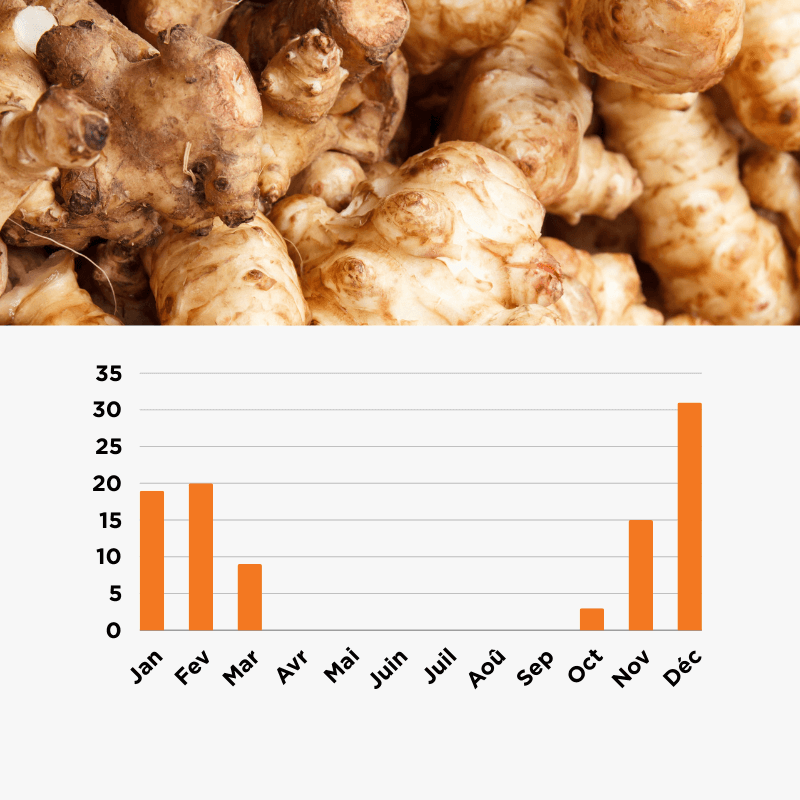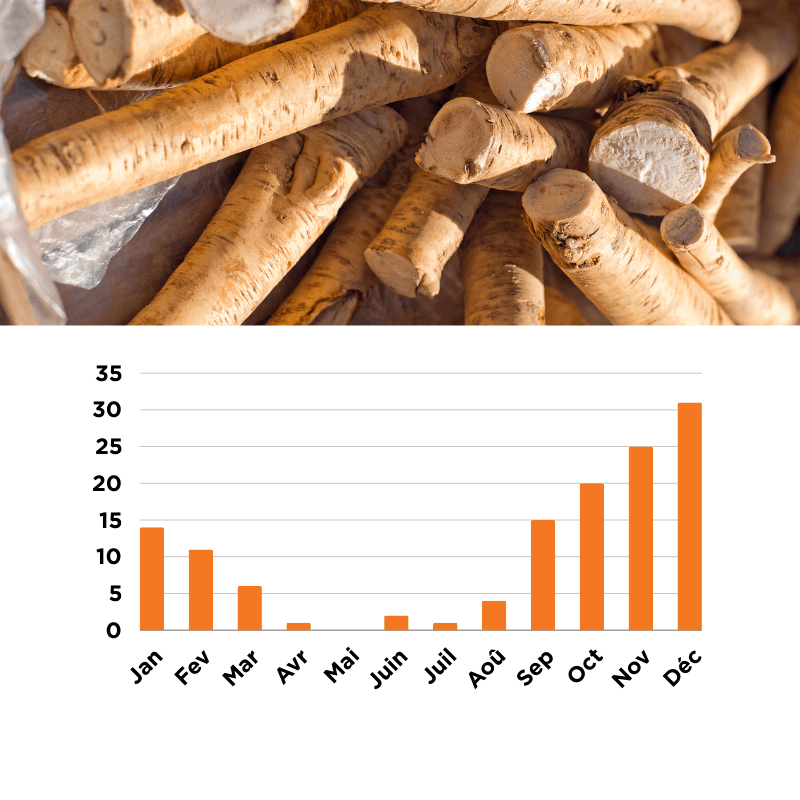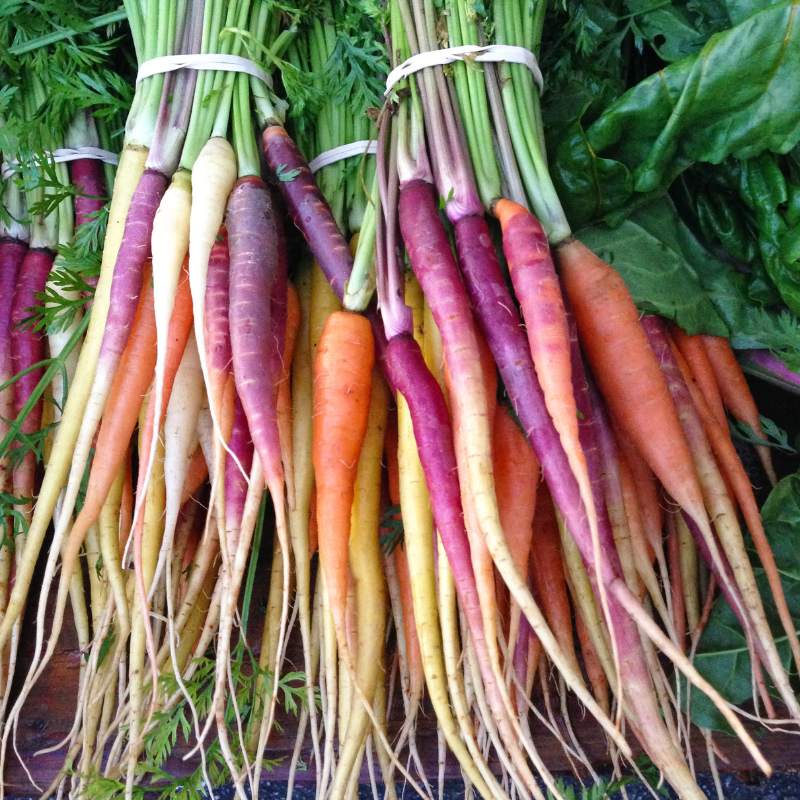OLD VEGETABLES
Ancient vegetables, sometimes referred to as forgotten vegetables, are varieties that have been cultivated for centuries and are now regaining a prominent place on our plates. Rich in authentic and often overlooked flavors, they bring culinary and nutritional diversity to our diets. Jerusalem artichoke, parsnip, and salsify are examples of these rustic vegetables, distinguished by their unique textures and tastes. By rediscovering them, we reconnect with traditional agricultural know-how while enjoying their health benefits.
Parsnip
The parsnip is an ancient root vegetable, similar to a large carrot but beige in color. Its sweet and slightly nutty flesh releases subtle notes of hazelnut, which pair perfectly with stews, soups, or purées. It can be roasted, sautéed, or steamed, offering great versatility in the kitchen. Rich in fiber, vitamins C and B9, as well as potassium, the parsnip is not only delicious but also beneficial for health. Rediscovered in recent years, it adds a touch of authenticity and comfort to winter dishes.
12 kg in medium EPS boxes, or 8, 10, 15, 20, or 30 pieces in EPS boxes.
Arrival period. In % per month:


Salsify
Salsify, sometimes referred to as “poor man’s asparagus,” is an ancient root vegetable with a delicate flavor reminiscent of artichoke or oyster. Brownish on the outside, it reveals a white flesh when peeled. Valued for its tender texture after cooking, it can be enjoyed sautéed, in a gratin, or puréed. Long forgotten, salsify is now making a comeback in kitchens for its subtle flavor and nutritional properties, rich in fiber, vitamins, and minerals. Ideal for diversifying winter dishes, it adds a touch of originality and refinement to culinary preparations.
12 bags of 1 kg in medium EPS boxes.
Arrival period. In % per month:
Jerusalem artichoke
The Jerusalem artichoke is a root vegetable with a sweet and slightly nutty flavor, reminiscent of artichoke. Its irregular shape and brownish skin encase a crunchy flesh that becomes tender after cooking. Versatile, it can be consumed as a puree, in soup, roasted, or even raw in salad. Long forgotten, the Jerusalem artichoke is now rediscovered for its nutritional benefits, being rich in fiber, iron, and vitamins. Its unique taste and pleasant texture make it an excellent choice for adding an original and rustic touch to winter dishes.
Arrival period. In % per month:


Horseradish
Horseradish is a root with a sharp and intense flavor, often compared to that of mustard or wasabi. Used as a condiment, it is appreciated for its powerful taste that enhances meats, fish, and sauces. Once grated, horseradish releases all its aroma and adds a spicy note to dishes. In addition to being a flavorful ingredient, it is rich in vitamin C and antioxidants, providing health benefits. Its versatile use in cooking makes horseradish a must-have for those who enjoy strong and distinctive flavors.
Arrival period. In % per month:
Colored Carrots
Colored carrots, whether orange, purple, yellow, or white, offer a rainbow of flavors and nutritional benefits.
Each color brings its own unique qualities: orange carrots are rich in beta-carotene, great for vision and skin; purple carrots contain anthocyanins with antioxidant properties; yellow carrots are sweet and mild, perfect for sweet-savory dishes; and white carrots, more delicate, add a subtle and refined flavor.


Golden Ball Turnip
The golden ball turnip, recognizable by its beautiful golden-yellow color, is an ancient root vegetable with a sweet and delicately mild flavor, much less pungent than the traditional turnip.
Rich in fiber, vitamin C, and antioxidants, the golden ball turnip is as nutritious as it is delicious.
Rutabaga
The rutabaga, sometimes called swede, is a hardy root vegetable with a mild, slightly sweet taste, similar to turnip but with a more subtle, buttery flavor.
This winter vegetable is rich in fiber, vitamin C, and minerals, making it a nutritious and comforting choice for seasonal dishes.
Once forgotten, rutabaga is making a comeback in the kitchen to add a touch of authenticity and sweetness to both traditional and modern recipes.

